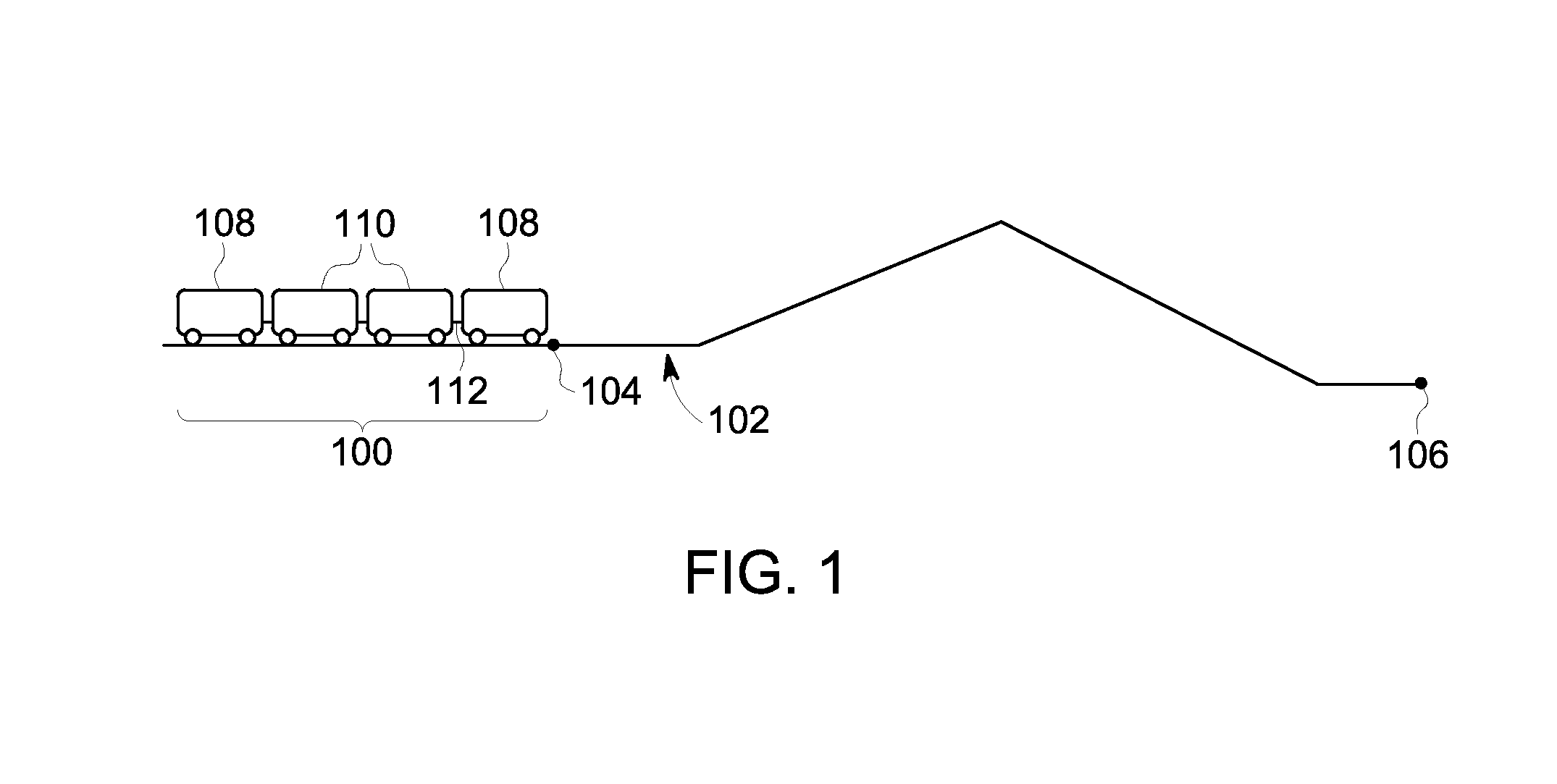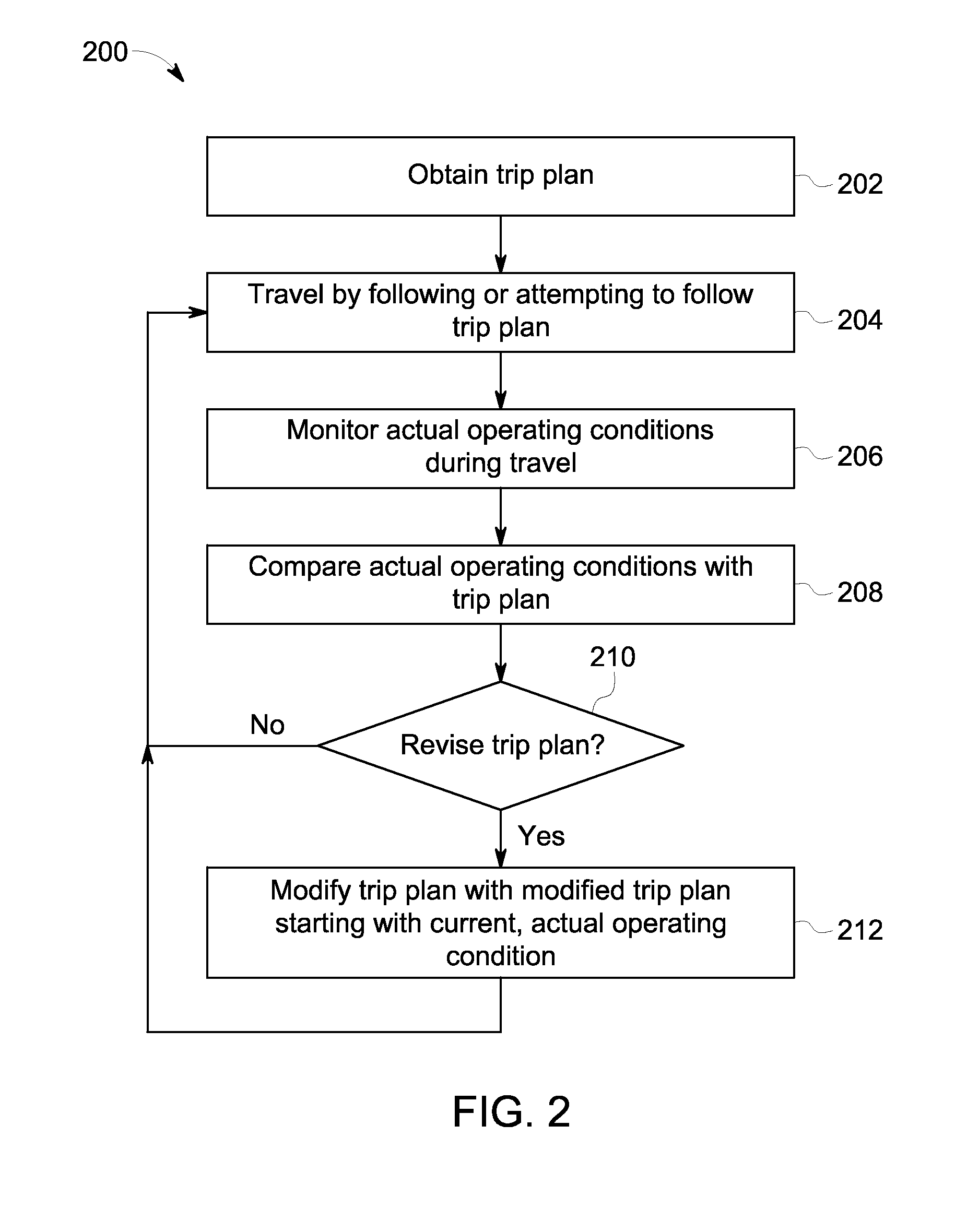Energy management system and method for vehicle systems
a technology of energy management system and vehicle system, which is applied in the direction of process and machine control, instruments, navigation instruments, etc., can solve the problems of large variation in fuel consumption and/or emission output, difficult to achieve, and inability to make further determination regarding actual emission output, etc., to achieve the effect of minimizing the fuel consumption and/or emissions of the trip
- Summary
- Abstract
- Description
- Claims
- Application Information
AI Technical Summary
Benefits of technology
Problems solved by technology
Method used
Image
Examples
Embodiment Construction
[0082]One or more embodiments of the systems and methods described herein provide trip plans for vehicle systems to travel along one or more routes during a trip. The trip plans designate operational settings of the vehicle systems during travel along the routes. These trip plans can designate speeds, accelerations, power outputs, brake settings, throttle positions, or the like, of the vehicle systems as a function of time and / or distance along the routes. In one aspect, the trip plans can designate the operational settings so that travel of a vehicle system according to the trip plan causes the vehicle system to consume less fuel and / or generate fewer emissions than the vehicle system traveling along the same route with different operational settings.
[0083]During travel according to the trip plan, the vehicle system may be unable to exactly follow the operational settings designated by the trip plan. For example, damage to a propulsion-generating vehicle of the vehicle system, dama...
PUM
 Login to View More
Login to View More Abstract
Description
Claims
Application Information
 Login to View More
Login to View More - R&D
- Intellectual Property
- Life Sciences
- Materials
- Tech Scout
- Unparalleled Data Quality
- Higher Quality Content
- 60% Fewer Hallucinations
Browse by: Latest US Patents, China's latest patents, Technical Efficacy Thesaurus, Application Domain, Technology Topic, Popular Technical Reports.
© 2025 PatSnap. All rights reserved.Legal|Privacy policy|Modern Slavery Act Transparency Statement|Sitemap|About US| Contact US: help@patsnap.com



